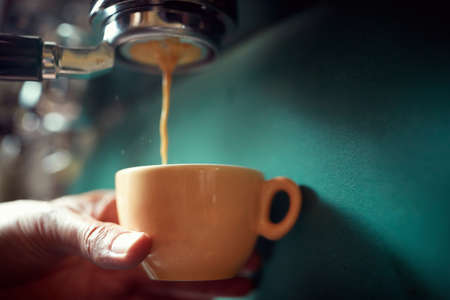1. Understanding Water Composition
When it comes to keeping your coffee equipment in top shape, water quality plays a bigger role than most people realize. Every time you brew coffee or clean your machine, the water youre using interacts with the internal components of your equipment. Over time, certain elements in the water can cause buildup, corrosion, or even damage if not properly managed.
The Building Blocks of Water
Let’s break down the key components of water that can impact your coffee gear:
| Component | Description | Impact on Equipment |
|---|---|---|
| Minerals (Calcium & Magnesium) | These are naturally found in most tap water and contribute to water hardness. | Can cause scale buildup inside boilers, pipes, and valves. |
| pH Level | Measures how acidic or basic the water is (on a scale from 0 to 14). | Water thats too acidic or too basic can corrode metal parts over time. |
| Total Dissolved Solids (TDS) | A measure of all organic and inorganic substances dissolved in water. | High TDS can lead to residue buildup; low TDS may affect cleaning efficiency. |
Why It Matters for Cleaning and Maintenance
If your water has high mineral content, for example, it doesn’t just affect the taste of your coffee—it also leaves behind deposits known as limescale. This buildup can clog internal components, reduce heating efficiency, and shorten the life of your machine. On the flip side, using overly purified or distilled water might seem like a good idea, but it can actually be too aggressive on metal surfaces during cleaning cycles.
Quick Tip:
If you notice white flakes or chalky residue on your equipment, that’s likely due to hard water minerals. Regular descaling and monitoring your water source can help prevent this.
What You Can Do
- Test your tap water for hardness and TDS levels using inexpensive test strips.
- Consider using filtered or conditioned water designed specifically for coffee equipment.
- Follow manufacturer guidelines for cleaning frequency based on your local water quality.
Understanding what’s in your water helps you make better choices—not just for great-tasting coffee but also for keeping your gear running smoothly for years to come.
2. How Poor Water Quality Affects Coffee Equipment
Water plays a major role not only in brewing coffee but also in keeping your equipment clean and working properly. However, when the water quality is poor—especially if it contains high levels of minerals or contaminants—it can do more harm than good. Let’s take a closer look at how hard water, chlorine, and other impurities can negatively impact both home and commercial coffee machines.
Hard Water and Scale Buildup
Hard water contains high levels of calcium and magnesium. When this water is heated inside your coffee machine, those minerals can settle on internal components like heating elements, boilers, and pipes. This process is called scaling, and it can seriously reduce the efficiency of your equipment.
Common Issues Caused by Scale
| Component | Effect of Scale Buildup |
|---|---|
| Heating Element | Takes longer to heat water, wasting energy |
| Pipes and Tubes | Restricted water flow, uneven pressure |
| Boiler or Reservoir | Reduced capacity, overheating risks |
Chlorine and Corrosion
Municipal water systems often add chlorine to kill bacteria. While that’s good for safety, chlorine isn’t great for your coffee machine. Over time, it can lead to corrosion of metal parts such as stainless steel boilers or brass fittings. This corrosion not only weakens the structure but may also affect the taste of your coffee.
Other Contaminants to Watch Out For
In addition to hard minerals and chlorine, water can contain other contaminants like iron, sulfur, or sediment. These can clog filters, stain internal surfaces, or create unpleasant odors in your equipment—and ultimately in your cup.
Examples of Water Contaminants and Their Effects
| Contaminant | Potential Impact on Equipment |
|---|---|
| Iron | Rust stains inside machines; metallic taste in coffee |
| Sulfur (Hydrogen Sulfide) | “Rotten egg” odor; affects flavor and smell |
| Sediment | Clogs filters and small components; increases wear and tear |
The Long-Term Cost of Ignoring Water Quality
If you don’t pay attention to the quality of the water you use, you might end up spending more on repairs or even replacing your equipment sooner than expected. Whether youre using a home espresso machine or managing a busy café with commercial brewers, poor water quality can lead to unexpected downtime and lost revenue.
Quick Tip:
If you notice inconsistent brewing temperatures, slow water flow, or strange tastes in your coffee—it might be time to check your water quality.
The bottom line: Using clean, properly filtered water doesn’t just make better-tasting coffee—it protects your investment in equipment too.
![]()
3. Best Practices for Water Filtration and Treatment
When it comes to keeping your coffee equipment clean and running smoothly, water quality plays a huge role. One of the easiest ways to protect your gear—and your coffee flavor—is by using the right water filtration and treatment system. Let’s dive into some practical advice that can help you choose the best setup for your needs.
Why Filtration Matters
Water that contains high levels of minerals, chlorine, or other impurities can lead to scale buildup inside your machines. This not only affects performance but can also change the taste of your coffee. Filtration removes these unwanted elements before they have a chance to do damage.
Types of Water Filters
There are several types of filters available, each designed to target specific issues. Heres a quick comparison:
| Filter Type | Main Function | Best For |
|---|---|---|
| Carbon Filters | Removes chlorine, odors, and organic compounds | Improving taste and smell |
| Softening Systems | Reduces calcium and magnesium (hardness) | Preventing scale buildup |
| Reverse Osmosis (RO) | Removes most dissolved solids and contaminants | Cafés in areas with very poor water quality |
| Polyphosphate Filters | Binds minerals to prevent scaling | Espresso machines and boilers |
Selecting the Right Solution for Your Setup
The best filtration system depends on your local water quality and the type of equipment you use. Start by getting a water test—many local water suppliers or specialty coffee services offer this. Once you know what youre dealing with, you can match your filter accordingly.
If You Run a Home Setup:
- A carbon filter pitcher or under-sink system may be enough.
- If youre using an espresso machine, consider a small softener cartridge.
- A descaling routine is still important even with basic filtration.
If You Operate a Café:
- An inline carbon filter combined with a softener is often ideal.
Maintenance Tips for Filtration Systems
No matter which system you choose, regular maintenance is key. Replace filters on schedule—usually every 6 months, but this can vary depending on usage and water quality. Failing to do so can lead to clogs or ineffective filtration, putting your equipment at risk again.
Pro Tip:
Add filter changes to your cleaning calendar. Treat them like oil changes for your car—it keeps everything running smoother longer.
Selecting the right water treatment system might take a little effort upfront, but it pays off in better-tasting coffee, fewer repairs, and longer-lasting equipment.
4. Routine Cleaning with Proper Water
Keeping your coffee equipment in top shape isnt just about how often you clean—it’s also about what kind of water you use during that cleaning. Using clean, filtered water for routine maintenance is one of the easiest ways to prevent long-term damage and ensure your gear continues to perform at its best.
Why Filtered Water Matters
Tap water may contain minerals, chlorine, or other impurities that can leave behind residue during cleaning. Over time, these deposits can clog internal components, impact temperature stability, and even alter the flavor of your coffee. By using filtered water, youre minimizing buildup and helping your equipment stay cleaner, longer.
Common Issues Caused by Poor Water Quality
| Water Impurity | Potential Impact on Equipment |
|---|---|
| Hard Water (high mineral content) | Scale buildup on heating elements and valves |
| Chlorine or Chloramine | Corrosion of metal parts and rubber seals |
| Sediment or Rust Particles | Clogged filters and blocked tubing |
Tips for Effective Daily Cleaning
- Use filtered water only: Whether youre rinsing a portafilter or flushing out a steam wand, always use water thats been filtered to reduce minerals and chemicals.
- Check your filtration system regularly: Make sure filters are changed according to manufacturer guidelines to maintain effectiveness.
- Avoid using softened water: While it reduces scaling, softened water can be corrosive over time if sodium-based systems are used.
- Don’t skip the rinse: After using any detergent or descaling agent, rinse thoroughly with filtered water to avoid residue build-up.
The Bottom Line
If youre investing time into keeping your coffee machine clean, make sure youre not undoing your hard work by using poor-quality water. Clean, filtered water doesnt just help with brewing—it plays a huge role in maintaining the longevity and performance of your equipment.
5. Long-Term Benefits of Maintaining Good Water Quality
When it comes to brewing great coffee and keeping your equipment in top shape, water quality plays a bigger role than most people think. Using clean, filtered water doesnt just improve the taste of your coffee—it also protects your machines from damage over time.
Protecting Your Investment
Coffee equipment, whether its an espresso machine in a café or a home brewer on your kitchen counter, is a serious investment. Poor water quality can lead to mineral buildup, corrosion, and internal damage that shortens the life of these machines. Regular maintenance with high-quality water reduces wear and tear, helping you avoid costly repairs or replacements down the road.
Better Tasting Coffee, Every Time
Water makes up about 98% of a cup of coffee. If your water has off-flavors or too many minerals, it can affect the way your coffee tastes—sometimes making it bitter, flat, or even sour. Clean water brings out the best in your beans, giving you consistent flavor with every brew.
How Water Quality Affects Flavor
| Water Issue | Impact on Flavor |
|---|---|
| High Chlorine Levels | Chemical or plastic-like aftertaste |
| Hard Water (High Minerals) | Muddy or overly bitter flavor |
| Soft Water (Low Minerals) | Flat or dull flavor profile |
| Unfiltered Water | Inconsistent taste and aroma |
Simplifying Maintenance Routines
Using good water also means less frequent descaling and cleaning. With fewer minerals entering your system, theres less buildup in boilers, pipes, and valves. This simplifies regular maintenance tasks and keeps your equipment running smoothly day after day.
Maintenance Comparison: Good vs. Poor Water Quality
| Maintenance Task | With Good Water | With Poor Water |
|---|---|---|
| Descaling Frequency | Every 3–6 months | Monthly or more often |
| Filter Replacements | As recommended (e.g., every 2–3 months) | Sooner due to clogging |
| Lifespan of Equipment Parts | Extended lifespan | Shortened due to corrosion/mineral deposits |
A Small Change with Big Results
Switching to filtered or properly treated water might seem like a minor detail, but over time, it adds up to major benefits. Not only will your equipment last longer and work better, but youll also enjoy more consistent and flavorful cups of coffee—day in and day out.
If youre serious about maintaining your gear and getting the most out of every bean, paying attention to your water quality is one of the smartest moves you can make.


